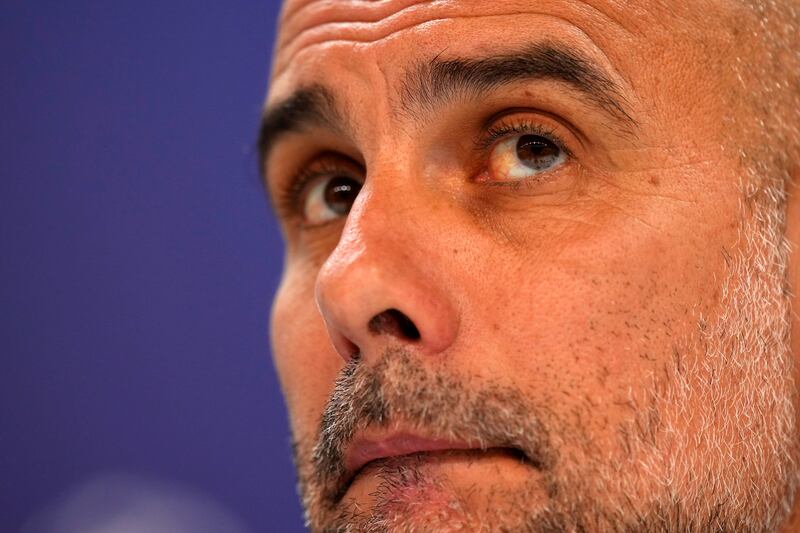I was looking forward to Bayern Munich against Manchester City. In April, when the best meet, you expect exciting matches. But I was disappointed. City managed the 3-0 advantage from the first leg. Bayern were not able to challenge their opponents.
Now I’m looking forward to Real Madrid against City. It’s the semi-final from last year, and back then it was the highlight of the season, with a narrow winner at the last. Again, it’s the two strongest clubs in the Champions League, which says a lot about Europe’s football. The English and Spanish leagues are not producing a second top team at the moment, the Bundesliga none at all. PSG promise but do not deliver. Italy is on the up, and Inter and Milan have taken advantage of the draw. But Real against City is the real final.
How do Real and City manage to dominate the competition? Through first-class footballers, through first-class managers, through clarity, identity, unity. Everyone at the club, whether coach, manager or team, pursues the same vision. Only then is harmony possible on the pitch.
And location plays a role. Real Madrid, 14-times Champions League winners, have always been in the top bracket. City have risen there with Pep Guardiola, assisted by the sporting director Txiki Begiristain. So far, City have won only one international title, the Cup Winners’ Cup in 1970. City were even number two in their own city for decades. What 1860 are in Munich, City were in Manchester. Fame and glory are not associated with such a club; it is not the natural place for the outstanding football stars.
READ MORE
That has changed. A year ago, the football world was preoccupied with the question: where is Erling Haaland moving to? It is an achievement by City that the coveted Norwegian goalscorer did not have to think twice. The club is now a brand – Guardiola has made it so in seven years. Which is very unusual and it is what sets City apart from Real: half of this brand is made up of Pep. His style is that of the club and he has shaped it, with a lot of money. That’s exactly why the owners brought him in: with this coach spectacle and success are guaranteed.
Guardiola has been setting the trend in football since 2008 because, writes El País, “he knows how to develop not only his teams but also his strategies”. His signature is his idea of play, familiar from his time in Barcelona and Munich: his players communicate with passes. In England, he has adapted, relying more on physicality in defence and attack. But here, too, he has built his team, who now seem very mature. It’s a nice mental game to imagine who would win in the duel between Barça in 2011 and City in 2023.

Guardiola, who always controls the action in the coaching zone, provides clear order but leaves enough room for creativity. His players benefit from this. Ilkay Gündogan would not have such an effect on any other top team. Kevin De Bruyne, you could forget, moved to City from Wolfsburg after Chelsea had previously given him away. And Jack Grealish, at almost 26, came from Aston Villa with no Champions League experience, and his individual interpretation of a winger is still beautiful to watch. Now, moreover, he behaves every minute like part of a whole.
Carlo Ancelotti’s approach is different. He works with the existing possibilities, with the DNA of the club. Thanks to his experience as a coach and his career as a player, he can precisely assess the people and institutions in each place like no other and balance their strengths and limitations. Ancelotti does not overtax anyone and is not disappointed when he does not get what he cannot get anyway. Dealing intelligently with resources is a highly competent style of leadership.
When he spontaneously juggles the ball on the sidelines in a suit and tie, everyone involved in football senses the authority of this personality. He has had success everywhere. With Milan, he won the Champions League in 2007, when the era of Italian dominance had long since ended. At Napoli, he was runner-up in Serie A. He saved Everton from relegation.
His current club knows no limits – except human age. Ancelotti is therefore taking responsibility for the future. So he has gradually allowed younger players such as Federico Valverde, Vinícius Júnior, Eduardo Camavinga and Rodrygo to grow into the team around the one-offs Toni Kroos, Karim Benzema and Luka Modric. One has the feeling that Real Madrid will renew their greatness again and remain a title contender.
Now, big football can indeed be expected in both legs of this Madrid-City tie, the alignment of both clubs almost guaranteeing that. City against Real, Guardiola against Ancelotti, outstanding footballers embedded in a functioning collective. The semi-final will be one you dare not miss. It is the duel of the two outstanding clubs of our time, probably of the next few years as well.
So far so good, but the Champions League should have more than two clubs battling to win it; the competition should be open. One still remembers City’s 7-0 thrashing of Leipzig in the last 16. Where is the competition? What’s happening elsewhere? Where is something new emerging? In Europe’s big, traditional football cities, there is a need to catch up. – Guardian














